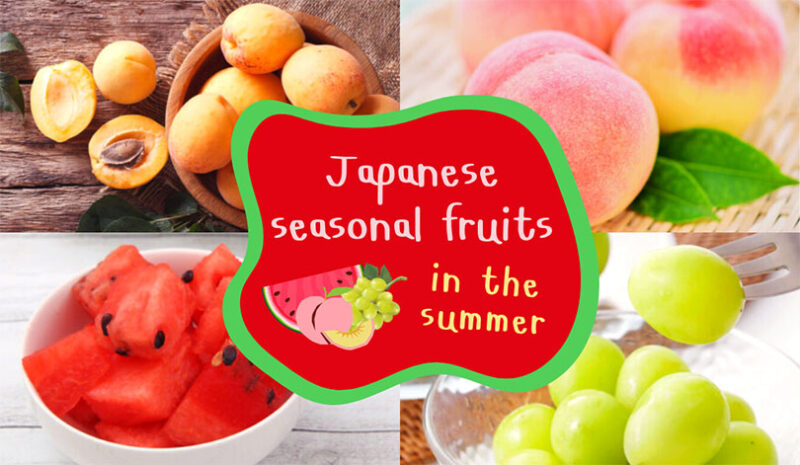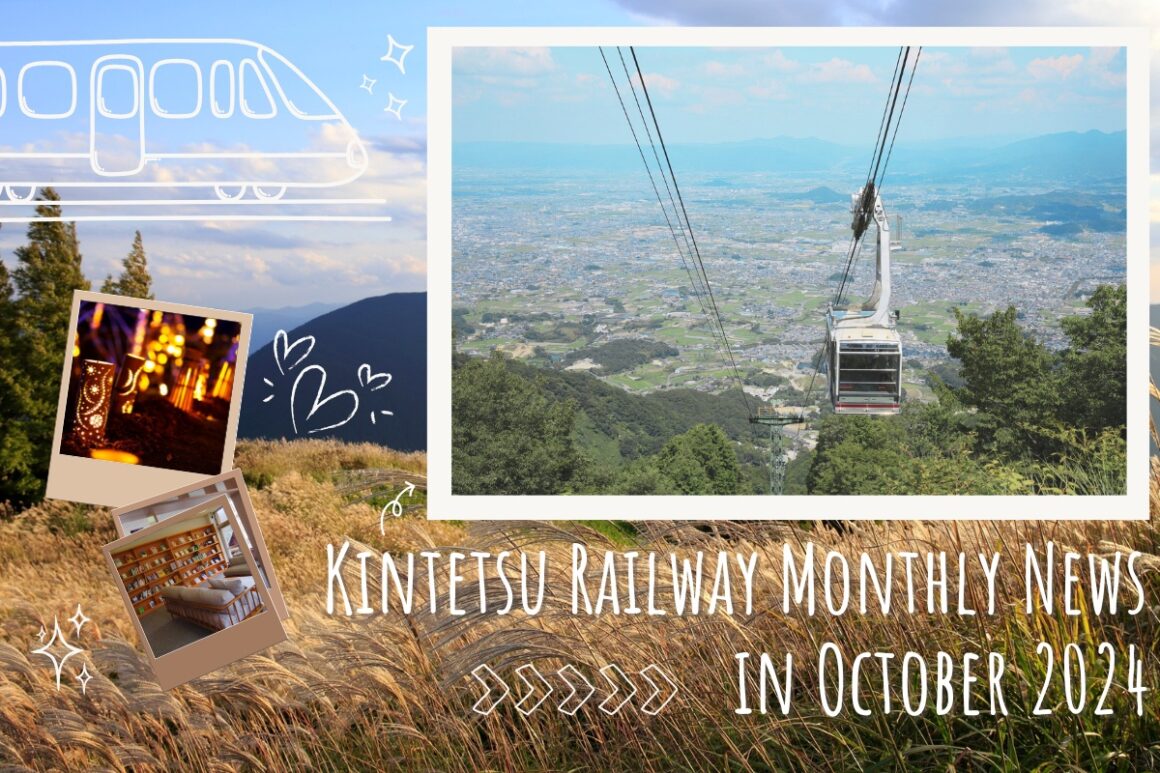10 amazing things to do in Yamagata, Japan!
Mar 15, 2021
Yamagata Prefecture is in the southern part of Tohoku region, facing the Sea of Japan. This prefecture is known for its exciting travel destinations, including vintage onsen towns, the tremendous Mt. Zao, and local delicacies like Yonezawa Beef and Cherries.
Yamagata is a mountainous region, and near two-thirds of its area is covered in thick forests. This prefecture is divided into four main regions: Murayama, Okitama, Mogami, and Shonai, and it has more than 230 waterfalls in the area – earning it a nickname, “The Kingdom of Waterfalls”.
If you’re looking for a travel destination with rich culture, soothing hot springs, tremendous mountains, and ski resorts, how about visiting Yamagata to have both, an extraordinary, yet a novel adventure?
Index
How to get there
Recommended sightseeing spots in Yamagata :
Yamagata’s best local treats:
How to get there
Yamagata Prefecture is accessible by several different transportation methods, including trains and highway buses. The main transportation hub in Yamagata is Yamagata Station.
The most convenient way to get to Yamagata from Tokyo is by taking the JR Yamagata Shinkansen, which takes around 2 hours and 45 minutes, and costs around 12,000 yen, and it is fully covered by the JR Pass.
The closest airport to Yamagata is the Sendai Airport in the neighboring Miyagi Prefecture, and it takes around 90 minutes to travel from Sendai City to Yamagata City with JR Senzan Line.
Recommended sightseeing spots in Yamagata
Located in southern Tohoku, Yamagata Prefecture is known for its beautiful snow, impressive onsen towns, waterfalls, and tremendous mountains. The most popular sightseeing areas in Yamagata are Yamagata City, Tsuruoka, and Mogami, which you must include in your travel itinerary for Yamagata.
Yamagata Prefecture is home to many great sightseeing spots like Yamadera Temple, Kajo Park, and Mt. Haguro. The prefecture is also known for its great hot spring towns like Ginzan Onsen and Zao Onsen.
Ready to take yourself to Yamagata? Here are our picks for the best things to do in Yamagata, Japan!
1. Visit Yamadera Temple and Yamadera Town!

Officially named as Hojusan Risshakuji Temple, Yamadera Temple is a sightseeing spot featuring a historical temple complex with breathtaking natural sceneries. The temple is located on a mountain, and the trails that go to the temple is also lined with other temples, shrines, and stone monuments.
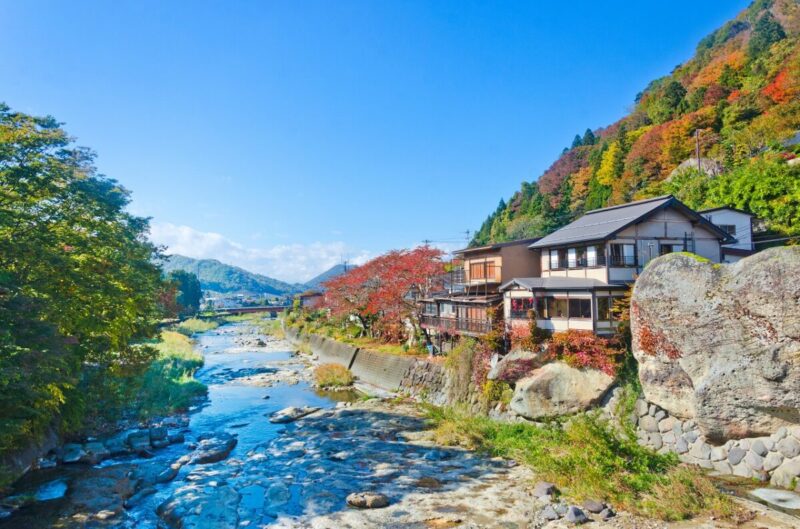
There is an observation deck near the temple called Godaido Hall, where you can capture the entire view of Yamadera Town, the temple town. It takes about an hour to walk from Yamadera Town to the farthest point of the temple complex.
Yamadera Temple
-
- Business hours : 8:00 – 17:00
- Admissions : 300 yen (age 15 & above), 200 yen (junior high school students), 100 yen (age 4-11)
- Access : a 7-minute walk from Yamadera Station
- Google Map
2. Stroll around Kajo Park and admire its beautiful cherry blossoms!
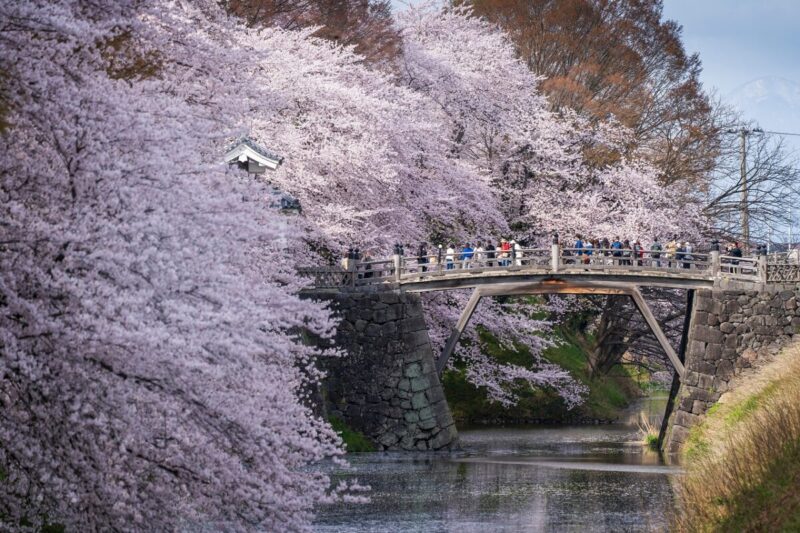
Kajo Park is the park in Yamagata that is a home to Yamagata Castle Ruins, which was built in 1356 and has been selected as one of Japan’s 100 best castles.
Kajo Park is best known for its magnificent cherry blossoms in spring, and it has become a popular cherry blossoms viewing spot for decades, as it’s only a 10-minute walk from Yamagata Station.
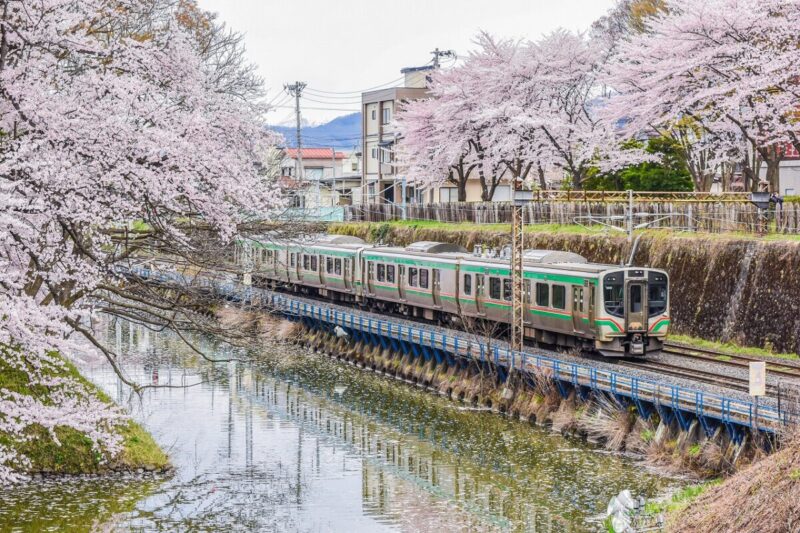
The moat around the castle complex allows you to enjoy “hanaikada”, a situation where cherry blossom petals had fallen into the river, creating a perfect dainty pink blanket that coated the surface of the water. The best time to visit the park is from mid-April, when more than 1,500 Somei-Yoshino cherry trees are in full bloom.
Kajo Park
-
- Business hours : 5:00 – 22:00 (April to October), 5:30 – 22:00 (November to March)
- Admissions : free
- Access : around a 10-minute walk from the West Gate of Yamagata Station
- Google Map
3. Stop by Ginzan Onsen, a famous hot spring town in Yamagata!
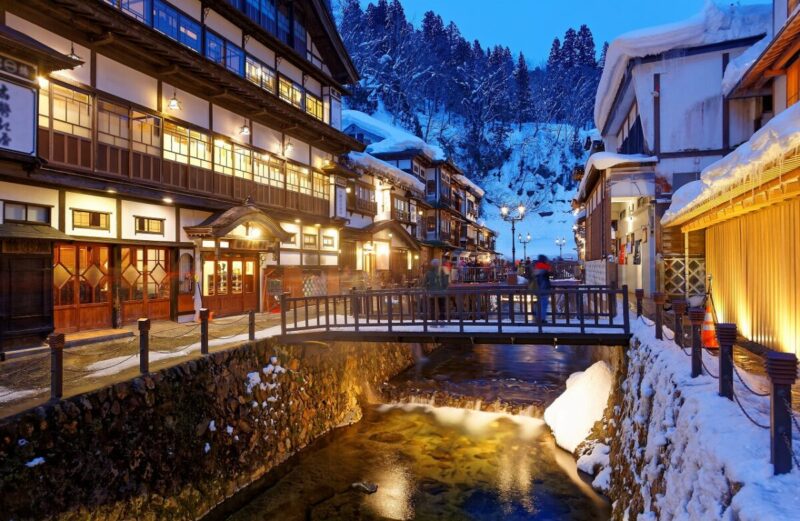
Ginzan Onsen is a hot spring town in Obanazawa City’s mountainous area, and the city is best known for its retro-style atmosphere. The streets of Ginzan Onsen are dotted with hot spring ryokans (traditional Japanese inns), and some of the ryokans have a history of more than 100 years.
Exploring Ginzan Onsen allows you to travel back in time, and the best time to visit the onsen town is in the winter, when the traditional buildings are covered by the white snow.
Ginzan Onsen
4. Admire the Architecture of Yamagata Local Museum Bunshokan!
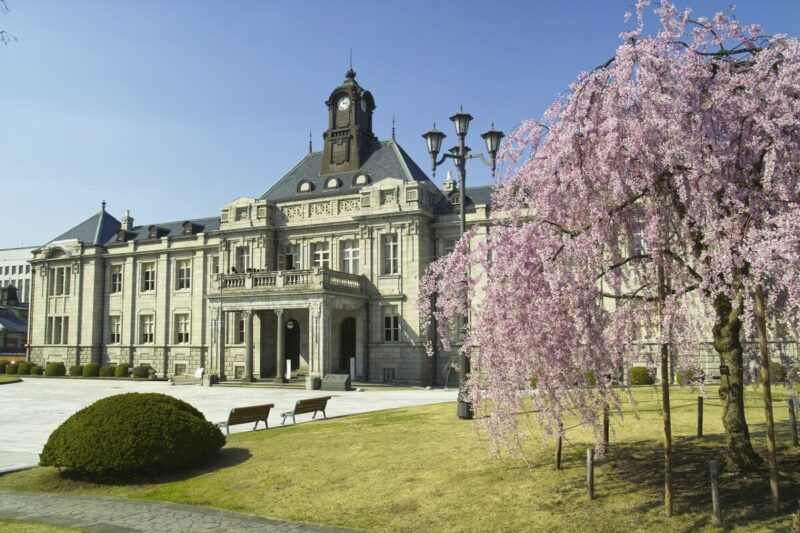
Yamagata Local Museum Bunshokan is a historical building in Yamagata that was built in 1916. The main highlight of the building is its European-style architecture, which was modeled on British architecture from the 16th to 18th centuries.
Open to the public for free, the museum has been designated as a National Important Cultural Property for its unique western-style architecture. The building served as the filming location for the live action movie and the TV drama of the famous manga series Rurouni Kenshin, so if you’re a fan of Samurai X, you should never miss this spot when you’re in Yamagata!
Yamagata Local Museum Bunshokan
-
- Business hours : 9:00 – 16:30
- Admissions : free
- Access : a 5-minute walk from Hatago-machi Ni-chome bus stop
- Google Map
- Website
5. Explore Mt. Haguro, a power spot and a National Treasure of Japan!
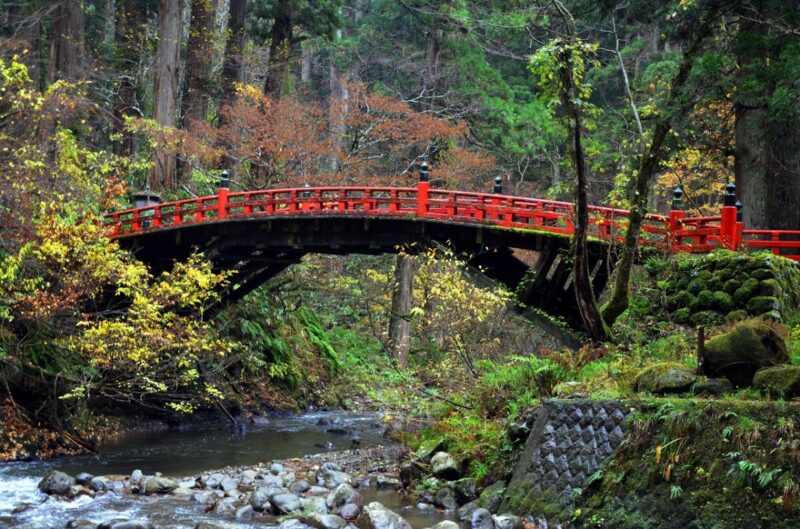
Mt. Haguro is in Tsuruoka City, and it is one of the three mountains of Dewa Sanzan. “Dewa” is the old name for Yamagata, and for many years, Mt. Haguro has been a hub for mountain worship in Tohoku, and a lot of worshippers have made a pilgrimage to the mountain since ancient times.
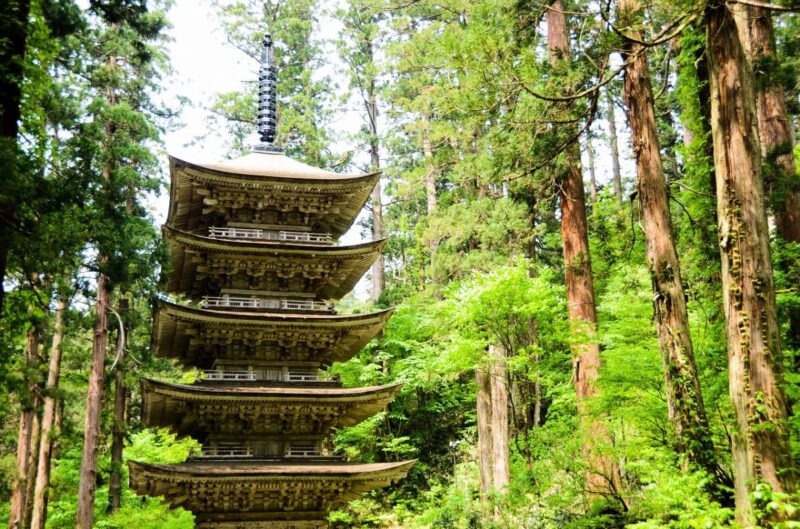
There are several highlights you can enjoy when exploring Mt. Haguro, including the red bridge across the river, to the Mt. Haguro Five-Story Pagoda, which is considered as a National Treasure by the government of Japan.
Mt. Haguro
6. Find your favorite local souvenirs at Sankyo Soko Storehouses!
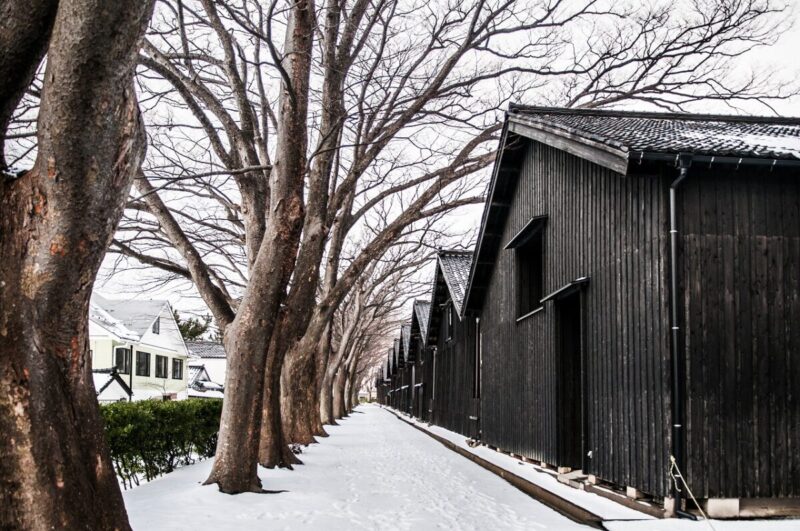
Sankyo Soko Storehouses is one of the most famous sightseeing spots in Sakata City, and it serves as a vast storehouse for rice. The storehouse complex consists of 12 mud-walled storehouses, and the complex is lined with rows of keyaki bonsai trees to protect the rice from sunlight and wind.
The storehouse is best known as the filming location for the popular Japanese TV drama “Oshin”, and there is a museum on the storehouse ground, and a sightseeing facility called “Sakata Yume no Kura”, where you can enjoy local meals, or purchase souvenirs unique to Sakata City and Shonai region.
Sankyo Soko Storehouses
-
- Business hours : 9:00 – 17:00
- Admissions : free
- Access : a few minutes’ walk from Sankyo Soko-mae bus stop
- Google Map
7. Cruise along Mogami River and enjoy its scenic seasonal views!
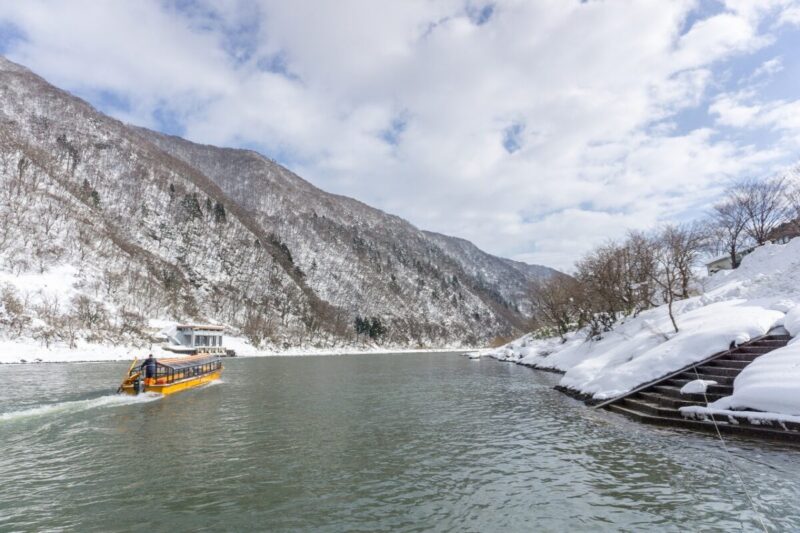
Mogami River is one of Japan’s three major rivers, and it is known as the longest river in Japan within a single prefecture. The river is surrounded by tremendous mountains, and it is best known for its seasonal views, particularly fresh greenery in the summer, red and golden leaves in fall, and soothing winter scenery as the white snow covered its surroundings.
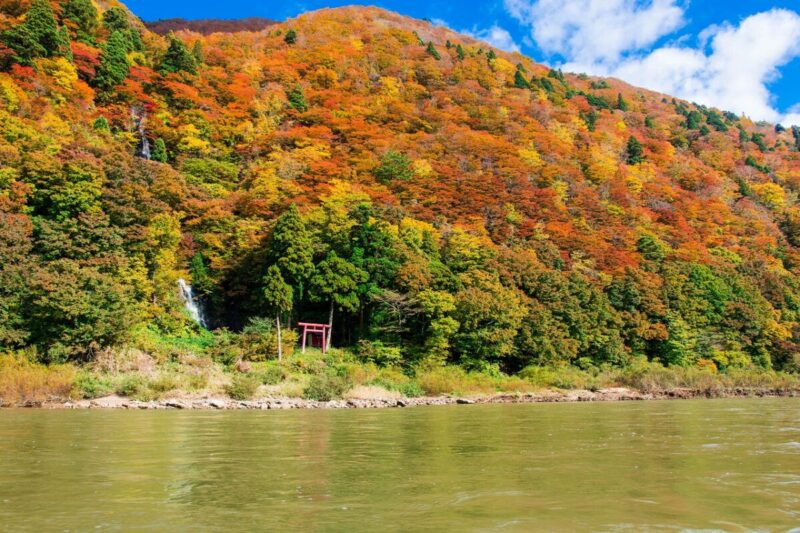
The best way to explore the river is by taking the sightseeing boats that depart from various places along the river, offering tours with a wide variety of courses. The cost for each course is around 2,500 yen, and if you make your reservation in advance, a meal is also included in the package.
Mogami River
8. Learn the history of Japan at Chido Museum!

Chido Museum is a private museum founded in 1950 in Tsuruoka, Yamagata. The museum was founded by the former Lord Sakai of the Shonai Domain, who donated his properties to promote the local culture of Shonai.
The museum houses folk materials from Shonai, classical caligraphy, woodcraft, and ceremonial sake barrels.
In addition to the museum, the premise also has several historical buildings, including the Former Nishitagawa District Office, which was built in 1881 and now considered as an Important Cultural Property of Japan.
Chido Museum
-
- Business hours : 9:00 – 17:00 (March to November), 9:00 – 16:30 (December to February)
- Closed from December 28 to January 4 ; closed every Wednesdays (within December and February only)
- Admissions : 800 yen (adults), 400 yen (high school & college students), 300 yen (elementary & junior high school students)
- Access : a 30-minute walk from Tsuruoka Station
- Google Map
- Website (in Japanese)
9. Visit the Sacred Gassan Shrine!
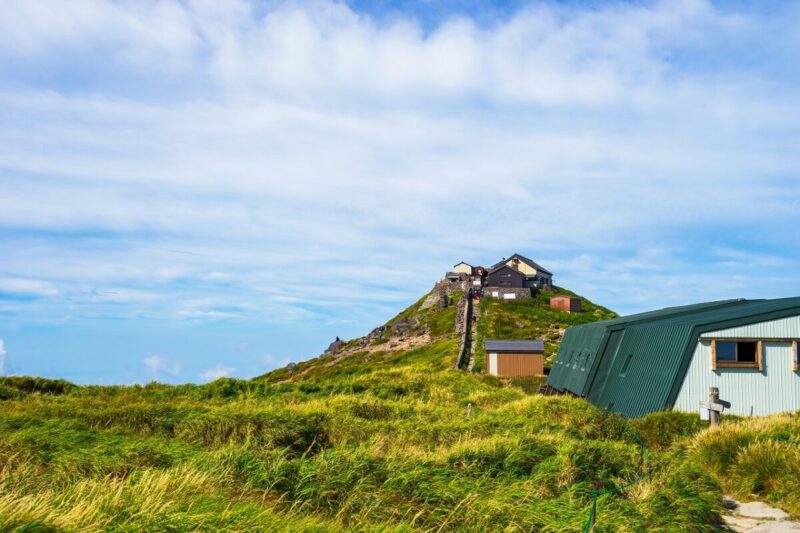
Gassan Shrine is a shrine located in the Dewa mountains range, particularly on the summit of Mt. Gassan. The shrine is located on a height of 1,984m, and since the interior of the shrine is considered as a holy place, you are not allowed to take pictures past the shrine’s main torii (shrine gate).
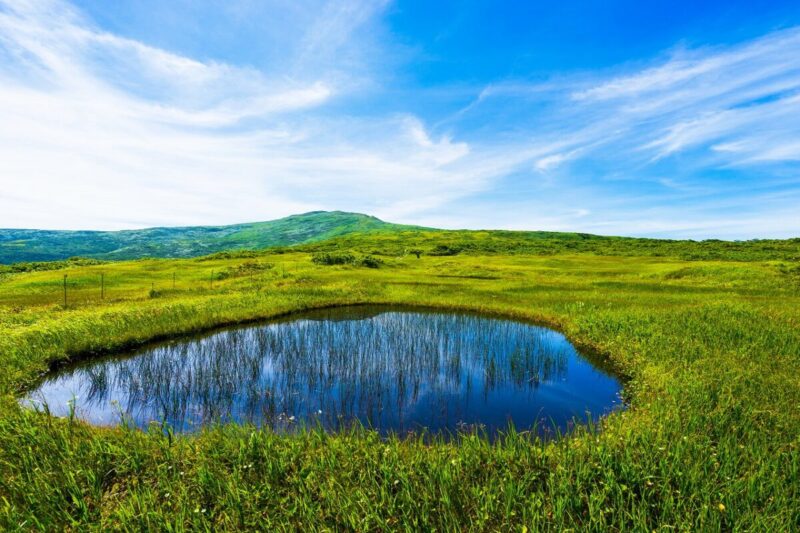
From the top of the mountain, you can look down on a sea of clouds if you’re lucky, and don’t forget to stop by Midagahara, a marshland near the 8th station for its beautiful greenery and blue ponds.
Gassan Shrine
10. End your trip by relaxing your body at Zao Onsen!

Before you end your trip in Yamagata, how about visiting Zao Onsen to relax your body at its amazing hot springs? Located at the foot of Mt. Zao, Zao Onsen is an onsen town where you can enjoy soaking your body in sulfur hot springs.
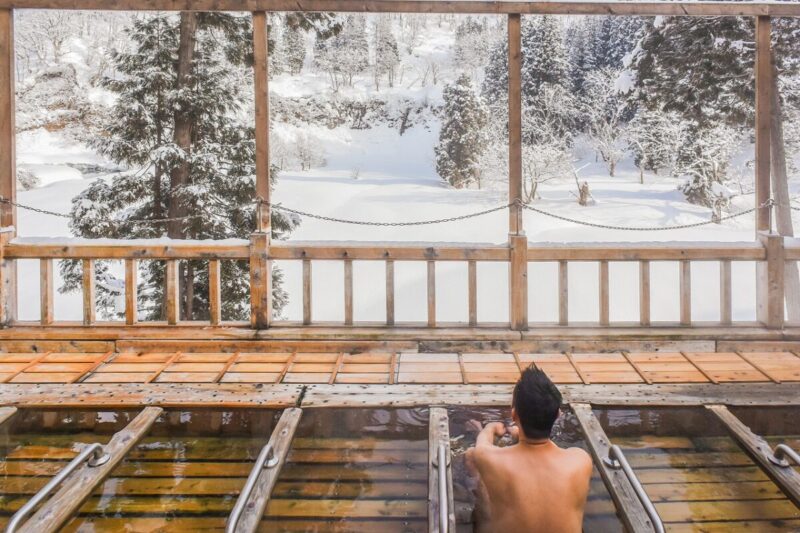
The hot springs at Zao Onsen is called as the “Springs of Beauty”, for its functions in rejuvenating and strengthening the skin and blood vessels. Zao Onsen is one of Japan’s most renowned mountain tourist destinations, and it offers not only hot springs, but also ski resort that opens every winter offering top-class slopes for winter sports lovers.
Zao Onsen
-
- Access : a 40-minute bus ride from Yamagata Station
- Google Map
- Website
Yamagata’s best local treats
Yamagata in the Tohoku region of Japan, right above Fukushima, and the prefecture is blessed with great ocean and fertile soils. The prefecture is known as the largest producer of cherries in Japan, and it is home to a variety of local foods, including Yonezawa beef, a top-notch wagyu brand, and imo-ni, a hearty winter dishes consisting taro potatoes and beef simmered in a soy-sauce based broth. Ready to fill your belly with Yamagata’s local specialties? Here are our picks for the best foods to try when visiting Yamagata!
1. Yonezawa Beef

Japan is best known for its high-quality beef, and Yonezawa Beef, which is native to Yamagata, is one of the three major Japanese beef brands in Japan. Located in south Yamagata, Yonezawa is known for producing high-quality Japanese beef with fine textures and juicy flavor. The best way to enjoy Yonezawa Beef is as shabu-shabu, sukiyaki, or as a steak.
2. Tama Konnyaku
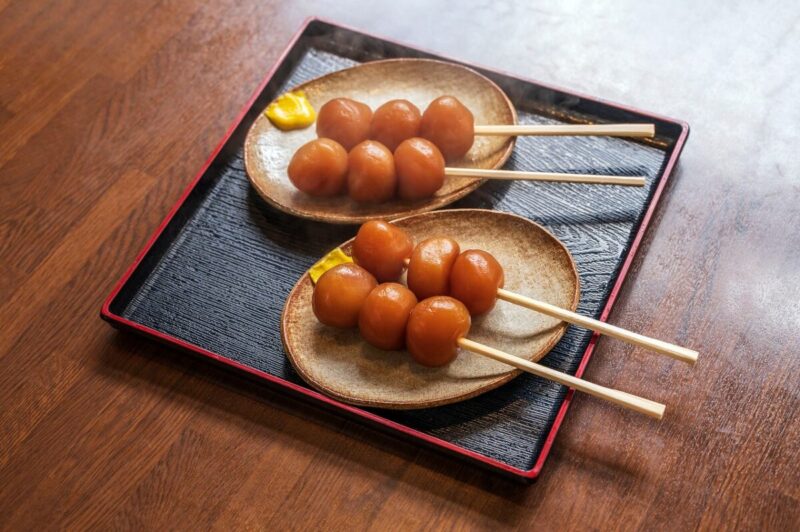
Yamagata Prefecture is known to have the highest consumption of konjac in Japan, and Tama Konnyaku is a local specialty of Yamagata, which is made by putting konnyaku balls on a skewer and boiling them in a soy sauce broth. Tama konnyaku is usually served with Japanese mustard (karashi), and it is known as a healthy snack as it’s high in fiber, but low on calories.
3. Sasamaki
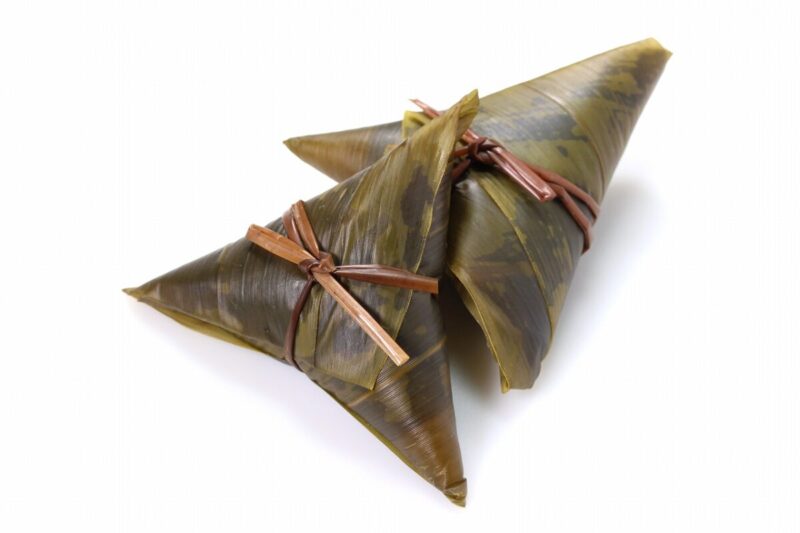
Sasamaki are traditional delicacies of Yamagata, and they are usually made to celebrate the children’s day on May 5. Sasamaki is steamed sticky rice wrapped in bamboo leaves, and in Yamagata, the steamed sticky rice is usually dipped in or sprinkled with sweetened soy-bean powder (kinako).
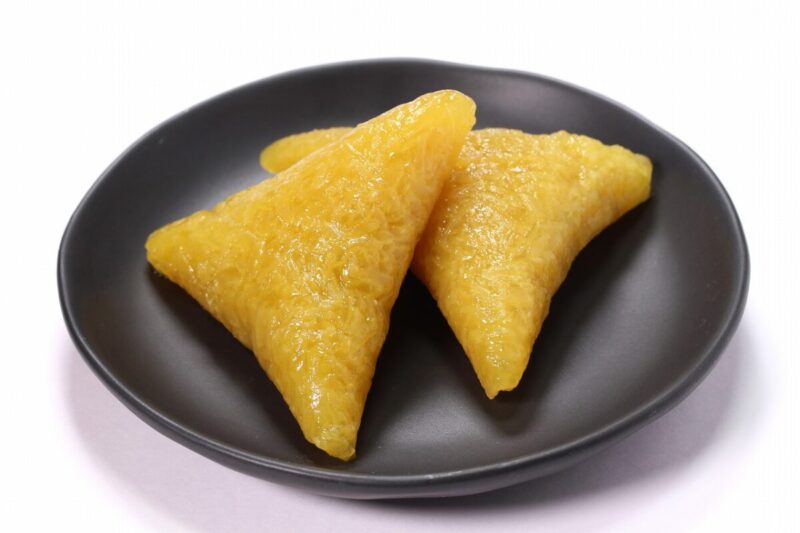
People believe that eating sasamaki will prevent illness, and you can buy sasamaki at nearby souvenir stores in Yamagata.
4. Imo-ni

Imo-ni is a traditional dish of Yamagata, and it was first invented in the mid-1600s by one of the locals in the prefecture. Imo-ni is made by boiling taro potato, green onions, konjac, and beef in a broth seasoned with soy sauce, sake, and sugar. Some regions have their own versions of imo-ni, so make sure to order imo-ni when you visit different regions of Yamagata!
5. Cherry
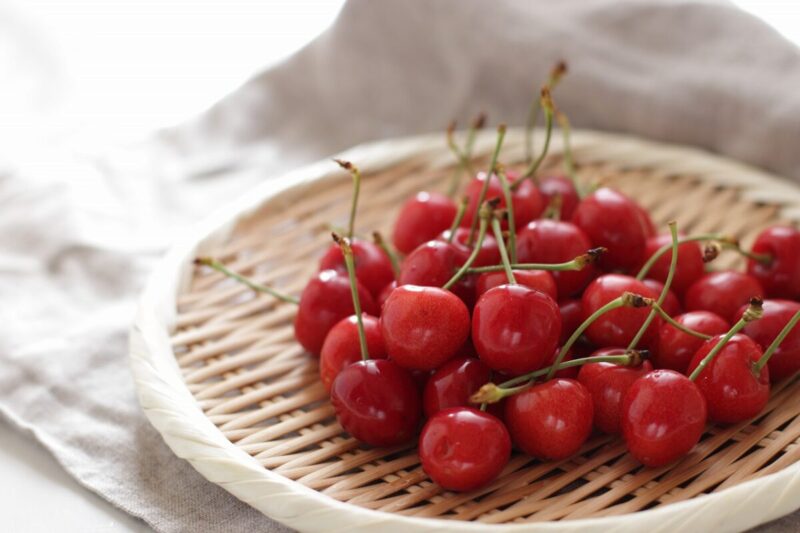
Yamagata is known as one of several fruit kingdoms in Japan, and the prefecture is known as the largest producer of cherry in Japan. The cherries are usually in season from late April to early July, and make sure to try Yamagata’s Sato Nishiki cherry, the most popular variety of cherry in Japan, when visiting the prefecture. Sato Nishiki cherries are extremely popular among both Japanese and foreigners due to their sweetness, and cherry parfaits made with Sato Nishiki cherries are one of the best desserts you can have when visiting Yamagata!
.
Now that you have an idea of how many fabulous spots are in Yamagata, all you must do is plan your itinerary to enjoy unforgettable experiences in Yamagata!


